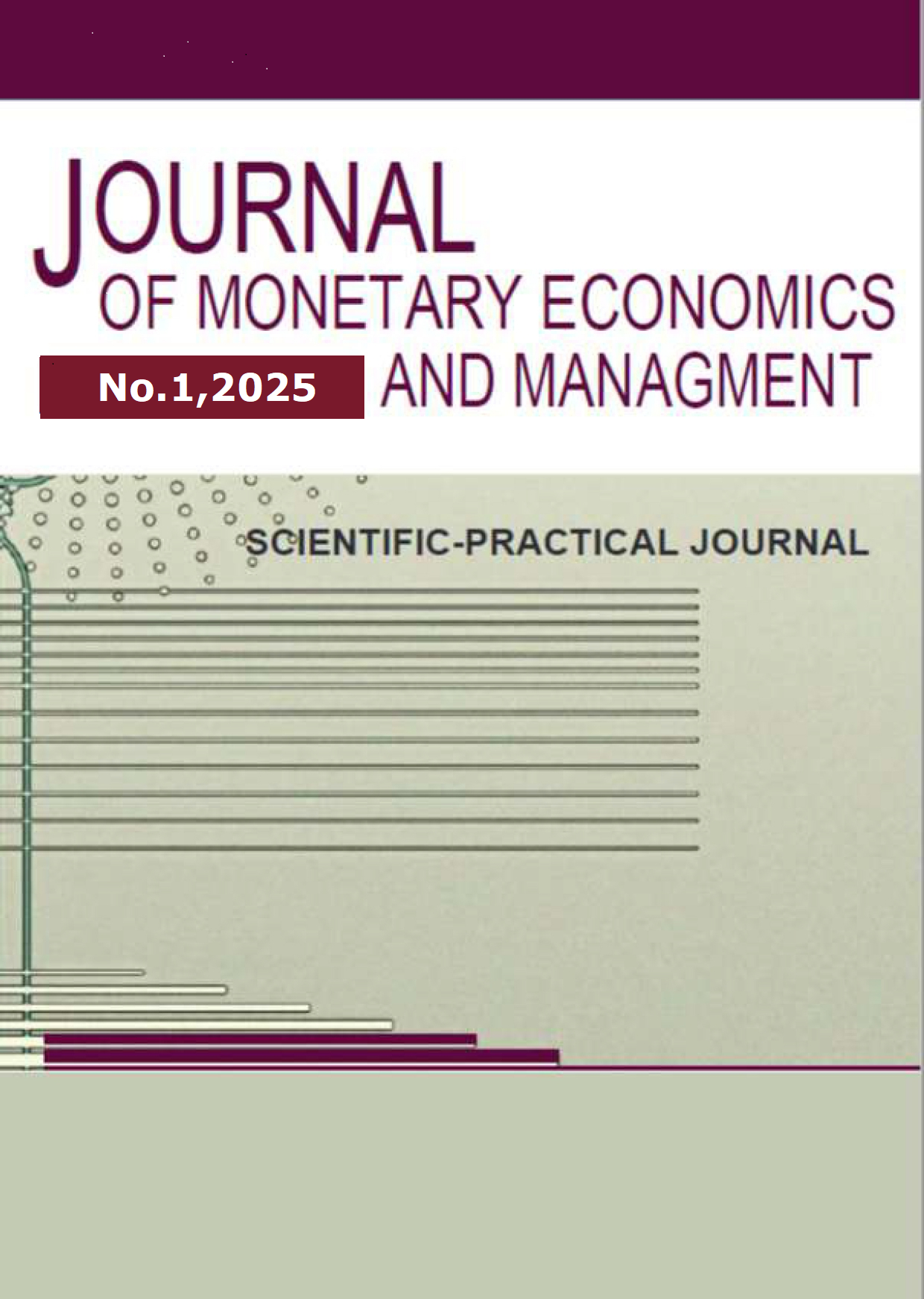student
The article examines the features of the system of real estate and current expenses lending in agriculture of the Republic of Azerbaijan. The relevance of the topic is due to the importance of the agricultural sector for the country's economy and the need to develop effective mechanisms for financing agricultural producers. The purpose of the work is to identify key characteristics, problems, and development prospects of lending in this area. The research methodology includes an analysis of the normative legal framework, statistical data on lending for 2018-2023, and interviews with representatives of banks and farming enterprises (n=25). It was found that the volume of loans issued for the purchase of real estate and financing of current expenses in agriculture increased by 64% over the specified period, but their share in the total volume of lending remains low - 5.2%. The average weighted interest rate on such loans was 14.8%, which is significantly higher than in other sectors. The main barriers to the expansion of lending were identified: high risks, the absence of collateral, and a lack of information about borrowers. The article outlines promising areas for the development of the system: improving legislation, creating specialized credit products, and applying new risk assessment technologies. The obtained results can be used for the development of state programs to support agriculture and optimization of banks' credit policies.
agriculture, lending, real estate, current expenses, risks, collateral, Azerbaijan
1. Aliev I.G. Rol' kredita v razvitii sel'skohozyaystvennogo proizvodstva Azerbaydzhana // Finansy i kredit. – 2015. – № 11. – S. 32-40.
2. Ahmedov G.A. Analiz sovremennogo sostoyaniya i tendencii razvitiya bankovskogo kreditovaniya sel'skogo hozyaystva v Azerbaydzhanskoy Respublike // Vestnik Moskovskogo universiteta imeni S.Yu. Vitte. Seriya 1: Ekonomika i upravlenie. – 2018. – №2 (25). – S. 60-66.
3. Byulleten' bankovskoy statistiki Central'nogo banka Azerbaydzhanskoy Respubliki. 2019. URL: https://www.cbar.az/page-41/statistics?language=ru (data obrascheniya: 20.12.2020).
4. Zakirova E.R. Osobennosti kreditnogo obespecheniya predprinimatel'skoy deyatel'nosti v agrarnom sektore // Social'no-ekonomicheskie yavleniya i processy. – 2014. – T. 9. – № 10. – S. 47-51.
5. Koncepciya razvitiya «Azerbaydzhan – 2020: vzglyad v buduschee». Utverzhdena Ukazom Prezidenta Azerbaydzhanskoy Respubliki ot 29.12.2012 g.
6. Mamedov E.M. Problemy i perspektivy razvitiya bankovskogo kreditovaniya sel'skogo hozyaystva regiona // Regional'nye problemy preobrazovaniya ekonomiki. – 2016. – №4 (66). – S. 96-100.
7. Oleynik E.B. Modernizaciya sistemy ipotechnogo kreditovaniya v sel'skom hozyaystve // Vestnik NGIEI. – 2019. – № 9 (100). – S. 103-114.
8. Sel'skoe hozyaystvo Azerbaydzhana. Statisticheskiy ezhegodnik – 2018. Baku, 2019.
9. Semenova N.N. Gosudarstvennoe regulirovanie sel'skohozyaystvennogo kredita v zarubezhnyh stranah // Finansovaya analitika: problemy i resheniya. – 2017. – T. 10. – № 2. – S. 236-248.
10. Subaeva A.K., Aleksandrova N.R. Regional'nye osobennosti formirovaniya i razvitiya rynka kreditnyh resursov APK // Vestnik Kazanskogo gosudarstvennogo agrarnogo universiteta. – 2013. – № 1. – S. 45-49.
11. Agricultural Lending: An Important Tool for Economic Growth in the Caucasus and Central Asia / Edited by O. Torero Cullent. - Mandaluyong, Philippines: Asian Development Bank, 2019. – 96 p.
12. Dries L., Swinnen J.F.M. Foreign Direct Investment, Vertical Integration, and Local Suppliers: Evidence from the Polish Dairy Sector // World Development. – 2004. – Vol. 32. – № 9. – P. 1525-1544.
13. Kloeppinger-Todd R., Sharma M. Innovations in Rural and Agriculture Finance. – Washington, DC: World Bank, 2010. – 34 r.
14. Koester U. Are Current Proposals of the EU Likely to Turn Around the Trend of Diminishing Agricultural Credit in Favor of Non-Agricultural Credit in the Rural Areas of Central and Eastern Europe? // Eastern European Economics. – 2015. – Vol. 43. – № 3. – P. 63-72.
15. Von Pischke J. Finance at the Frontier: Debt Capacity and the Role of Credit in the Private Economy. - Washington, DC: World Bank, 1991. – 427 p.









